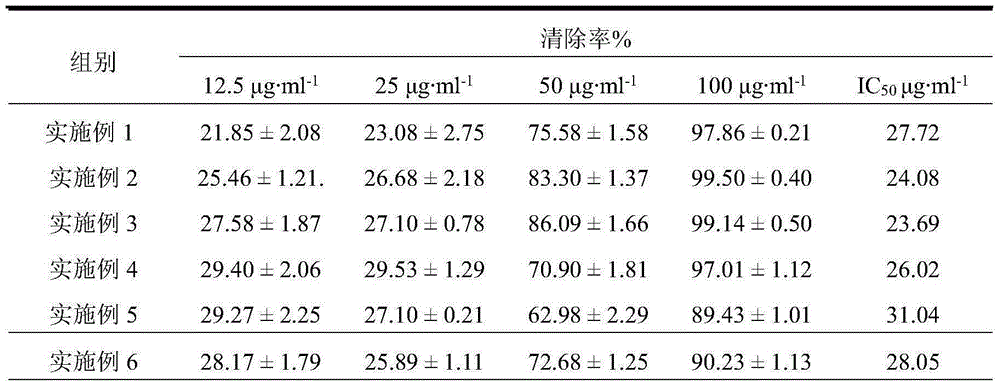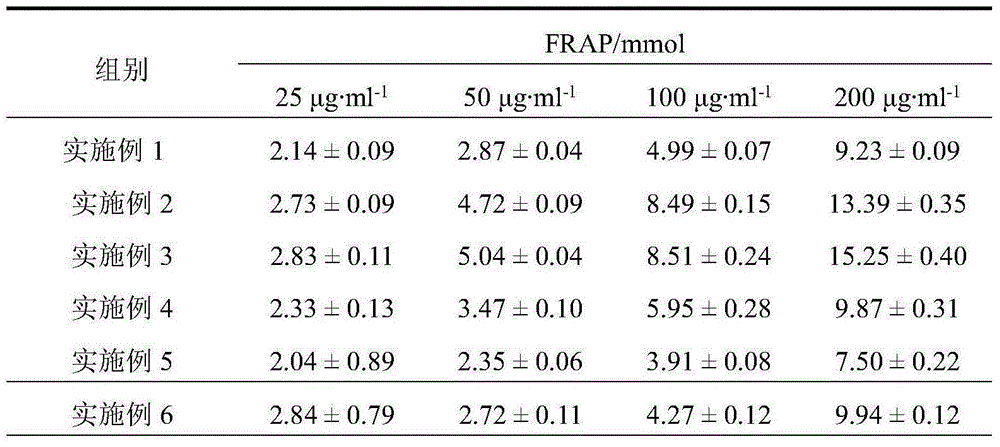Method for efficiently preparing salvianolic acid components from overground stems and leaves of salviae miltiorrhizae employing bioconversion technology
A technology of phenolic acids and salvia miltiorrhiza, applied in the field of resource utilization of salvia phenolic acid components, aboveground stems and leaves of salvia miltiorrhiza, to achieve the effects of improving resource utilization efficiency, increasing industrial economic benefits, and good ecological benefits
- Summary
- Abstract
- Description
- Claims
- Application Information
AI Technical Summary
Problems solved by technology
Method used
Image
Examples
Embodiment 1
[0037] In the method for preparing salvianolic acid components from aboveground stems and leaves of Salvia miltiorrhiza, it comprises the following steps:
[0038] (1) Take 50g dry powder of above ground stems and leaves of Salvia miltiorrhiza, place in a 1000ml Erlenmeyer flask, accurately add 500ml of pure water, accurately weigh it, soak it for 16h, then ultrasonicate it at 30°C and 100KHz for 30min, weigh to make up for the weight loss, Filter, repeat the extraction three times, combine the filtrates, and concentrate the solution to a dry powder. Take an appropriate amount of dry powder, dissolve it in water to a certain volume, pass through a 0.22 μm membrane, and set the volume to a certain volume. Under sterile conditions, inoculate 1 / 20 volume of Rhodobacter sphaeroides bacteria solution and cultivate for 3-5 days to obtain Rhodobacter sphaericus Transformation of salvia miltiorrhiza culture fluid.
[0039] (2) Centrifuge at 3000r / min for the culture solution of Salvi...
Embodiment 2
[0041] In the method for preparing salvianolic acid components from aboveground stems and leaves of Salvia miltiorrhiza, it comprises the following steps:
[0042] (1) Take 100g dry powder of above ground stems and leaves of Salvia miltiorrhiza, place in a 1000ml Erlenmeyer flask, accurately add 500ml of pure water, accurately weigh it, soak it for 10h, then ultrasonicate for 30min at 30°C and 100KHz, weigh to make up for the weight loss, Filter, repeat the extraction three times, combine the filtrates, and concentrate the solution to a dry powder. Take an appropriate amount of dry powder, dissolve it in water to a certain volume, pass through a 0.22 μm membrane, and set the volume to a certain volume. Under sterile conditions, inoculate 1 / 10 of the volume of Rhodobacter sphaeroides bacteria solution and cultivate for 3 to 5 days to obtain Rhodobacter sphaericus Transformation of salvia miltiorrhiza culture fluid.
[0043] (2) Centrifuge at 2000r / min for the culture solution ...
Embodiment 3
[0045] In the method for preparing salvianolic acid components from aboveground stems and leaves of Salvia miltiorrhiza, it comprises the following steps:
[0046] (1) Take 50g dry powder of above ground stems and leaves of Salvia miltiorrhiza, put it in a 1000ml Erlenmeyer flask, accurately add 500ml of pure water, accurately weigh it, soak it for 15h, then ultrasonicate it at 30°C and 100KHz for 30min, weigh to make up for the weight loss, Filter, repeat the extraction three times, combine the filtrates, and concentrate the solution to a dry powder. Take an appropriate amount of dry powder, dissolve it in water to a certain volume, pass it through a 0.22 μm membrane, and set the volume to a certain volume. Under sterile conditions, inoculate 1 / 20 volume of Rhodopseudomonas palustris bacteria solution and cultivate for 3-5 days to obtain Rhodopseudomonas palustris transformed Salvia miltiorrhiza culture fluid.
[0047] (2) Centrifuge the Rhodopseudomonas palustris transforme...
PUM
 Login to View More
Login to View More Abstract
Description
Claims
Application Information
 Login to View More
Login to View More - R&D
- Intellectual Property
- Life Sciences
- Materials
- Tech Scout
- Unparalleled Data Quality
- Higher Quality Content
- 60% Fewer Hallucinations
Browse by: Latest US Patents, China's latest patents, Technical Efficacy Thesaurus, Application Domain, Technology Topic, Popular Technical Reports.
© 2025 PatSnap. All rights reserved.Legal|Privacy policy|Modern Slavery Act Transparency Statement|Sitemap|About US| Contact US: help@patsnap.com



